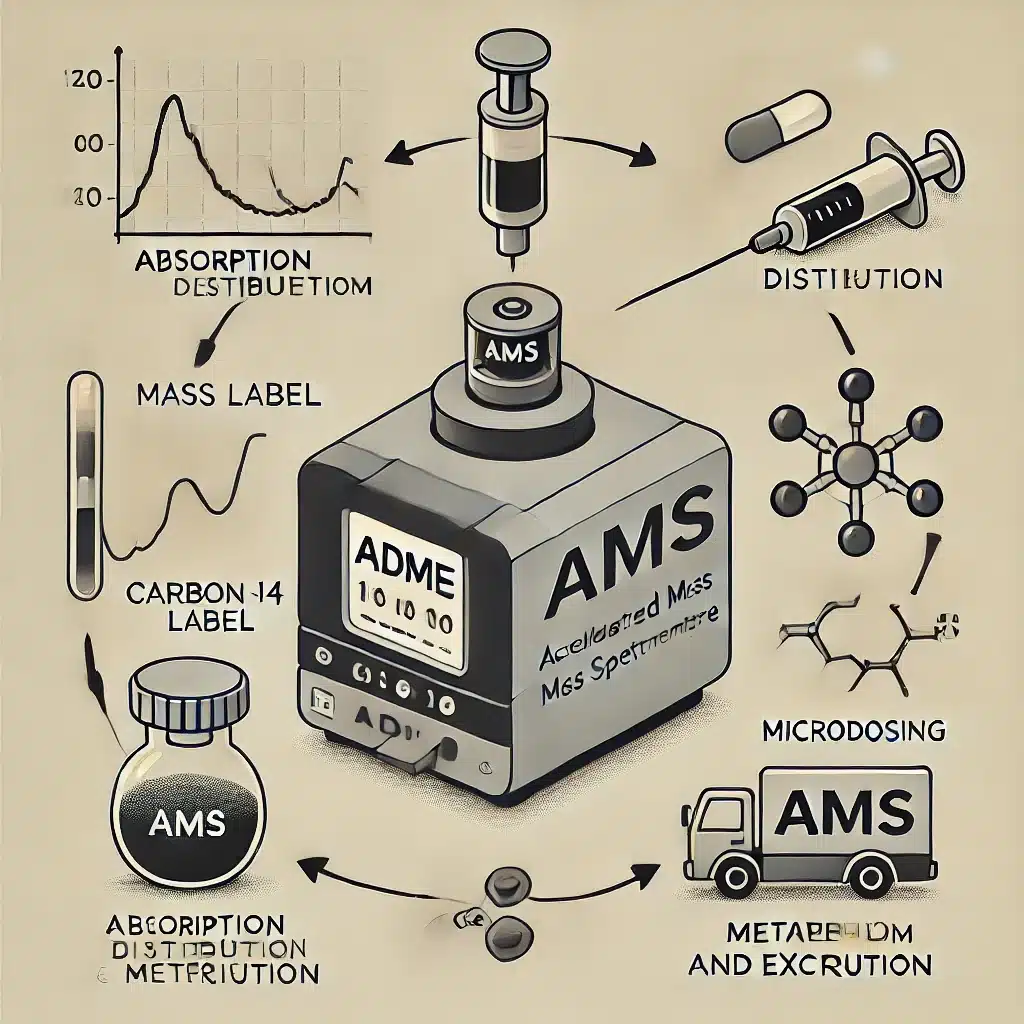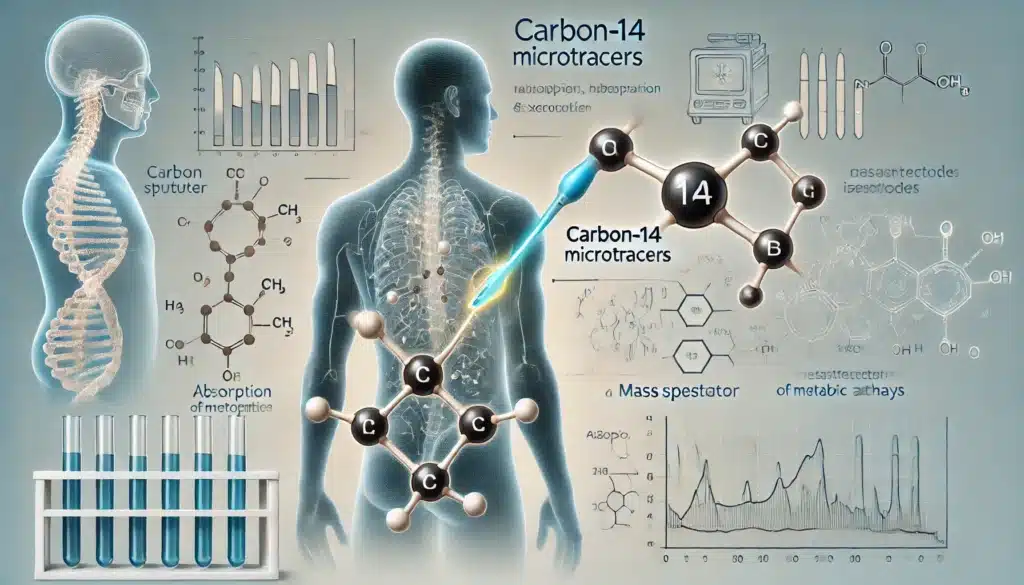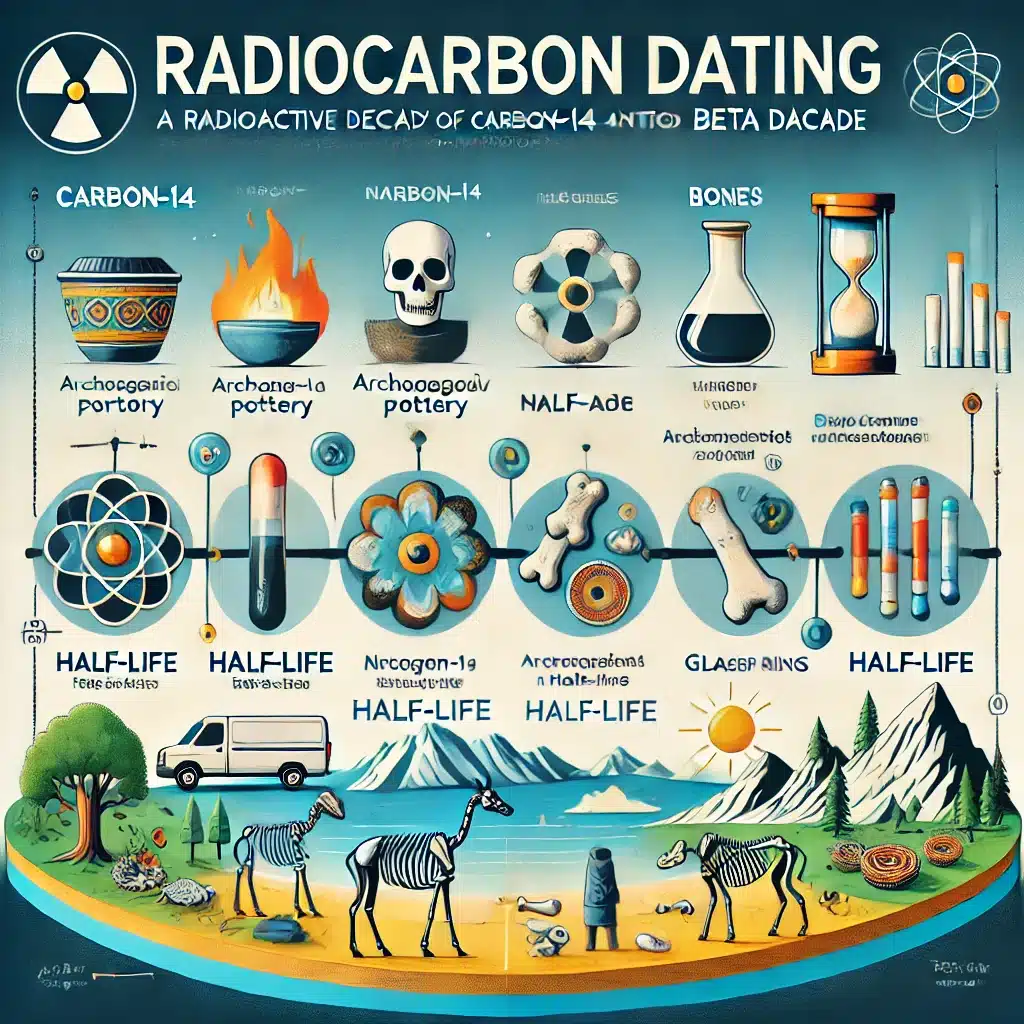Summary: Carbon-14, often overshadowed by shorter-lived and more glamorous radioisotopes, remains a cornerstone in radiochemical research and tracer methodologies. Its unique properties – especially its long half-life, biological compatibility, and stable labelling potential – continue to support fundamental scientific investigations across multiple disciplines. From drug metabolism studies to environmental science and archaeological dating, the versatility and precision of carbon-14 remain unmatched in many applications. This article examines the significance of carbon-14, looking into its historical importance, scientific applications, and ongoing relevance in an increasingly complex radiochemical landscape.
Keywords: Carbon-14, Radiotracer, Radiochemistry, Isotopic Labelling, Drug Metabolism, Environmental Science.
A Legacy in Radiochemistry
Carbon-14, discovered in 1940 by Martin Kamen and Sam Ruben, was rapidly adopted into the toolkit of scientists eager to trace biochemical pathways. With a half-life of 5,730 years and low-energy beta emissions, Carbon-14 became a vital component of early life science research, particularly in metabolic labelling studies. Its long half-life allows experiments to be conducted over extended periods without the signal degrading substantially, and its behaviour mimics that of stable carbon isotopes, ensuring accurate incorporation into organic molecules.
The importance of carbon-14 during the mid-20th century was unparalleled. It allowed researchers to uncover the mechanics of DNA replication, protein synthesis, and cellular metabolism. These fundamental discoveries laid the groundwork for molecular biology and pharmacology, illustrating that the role of carbon-14 extended far beyond academic curiosity. It became a vehicle through which invisible biological processes were made visible.
Unique Characteristics That Still Resonate
In an era that increasingly prioritises efficiency and safety, the value of carbon-14 might seem diminished when compared to radioisotopes like fluorine-18 or technetium-99m. Yet, it is precisely the distinct characteristics of carbon-14 that secure its continuing relevance. Its long half-life supports long-term studies – from the fate of drugs in the human body to the decomposition of organic matter in soil.
Unlike many other radioisotopes, carbon-14 is non-volatile and forms stable bonds with carbon atoms in a molecule. This trait makes it possible to label nearly any organic compound at any position, without altering the molecule’s behaviour. It is, therefore, ideal for high-fidelity tracking of molecular fate within complex biological systems. In contrast, isotopes like fluorine-18, with a half-life of less than two hours, offer little opportunity for such comprehensive tracking, especially for slow or multi-phase processes.
Moreover, the low-energy beta emission from carbon-14 does not require complex shielding and is relatively easy to handle in a laboratory setting. Its safety profile, while still requiring careful management, compares favourably with many higher-energy radiotracers.
Drug Development and Pharmacokinetics
One of the most critical contemporary applications of carbon-14 remains in the pharmaceutical industry, particularly within the field of drug metabolism and pharmacokinetics (DMPK). Here, carbon-14-labelled compounds are essential in ADME studies, which encompass absorption, distribution, metabolism, and excretion. These studies form the basis for understanding a drug’s behaviour in the body and are a regulatory requirement in both the EU and the United States for new drug applications.
The advantage of using carbon-14 in this context is clear: it can be incorporated stably into a parent drug molecule and followed through its entire journey in the body. Radiolabelled metabolites can be isolated, identified, and quantified, providing a comprehensive picture of the drug’s fate and safety. No other isotope offers the same level of detail with as minor a perturbation to the molecular structure or biological function.
Even with the rise of mass spectrometry and non-radioactive tracers, carbon-14 remains the only viable tool when it comes to absolute quantification of metabolites over long periods. It also supports the development of physiologically based pharmacokinetic (PBPK) models that inform dose adjustments, toxicology studies, and long-term safety assessments.
Beyond Medicine: Environmental and Agricultural Science
The role of carbon-14 is not limited to human health. It continues to be an indispensable tool in environmental science, particularly in studies involving soil carbon cycling, plant respiration, and long-term ecological change. Because the isotope integrates naturally into the carbon cycle, it can be used to monitor how carbon moves through terrestrial and aquatic systems – an issue that has become increasingly important in the context of climate change.
In agricultural science, carbon-14-labelled compounds help evaluate the degradation and persistence of pesticides and fertilisers. Regulators require data on how long these compounds remain in the environment, what by-products they generate, and their potential impact on non-target species. Carbon-14 provides the sensitivity and specificity needed to track these chemicals at extremely low concentrations over months or even years.
Moreover, it plays a central role in studying the binding of agrochemicals to soil particles, a process crucial to understanding their mobility, bioavailability, and potential for groundwater contamination. Few other tracing methods offer the depth and resolution required for these analyses.
Archaeology and Radiocarbon Dating
Although less connected to the radiotracer applications described above, the role of carbon-14 in radiocarbon dating is perhaps its most public-facing scientific contribution. In this context, it has transformed archaeology and palaeoecology, providing a timescale for historical and prehistorical events across thousands of years.
Organic material such as bone, charcoal, shell, and textile can be accurately dated using carbon-14. The method relies on the known decay rate of the isotope and the assumption that living organisms maintain equilibrium with atmospheric carbon-14 during life. After death, the isotope decays, allowing scientists to calculate the time since the organism’s demise.
While this form of carbon-14 usage does not employ it as a tracer in the strictest sense, it further highlights its significance as a scientific tool. It also shows the isotope’s cross-disciplinary importance, ranging from chemistry and medicine to anthropology and history.
The Industrial and Regulatory Perspective
Producing carbon-14-labelled compounds is not without challenges. The synthesis must be meticulously planned to incorporate the isotope at a relevant and stable position in the molecule, and specialised facilities are required to manage and dispose of radioactive waste. Nevertheless, several contract manufacturing organisations (CMOs) have developed robust capabilities in carbon-14 radiolabelling, supporting both early-phase research and regulatory submissions.
From a regulatory perspective, carbon-14 is held in high regard. Agencies such as the Medicines and Healthcare products Regulatory Agency (MHRA) and the US Food and Drug Administration (FDA) view carbon-14 studies as the gold standard for definitive mass balance studies. No surrogate method provides the same degree of certainty. As a result, pharmaceutical companies continue to invest in carbon-14-labelled studies even while exploring other non-radiolabelled options.
The long-term storage of carbon-14 waste remains a concern, particularly for academic institutions and smaller laboratories. However, modern protocols and collaboration with licensed waste handlers have made disposal more manageable. Furthermore, advancements in microdosing and Accelerator Mass Spectrometry (AMS) have enabled researchers to use significantly smaller amounts of carbon-14 while maintaining sensitivity, thereby reducing waste volumes.
Innovation Through Tradition
The enduring relevance of carbon-14 may seem paradoxical in a world dominated by rapid technological progress and increasingly short-lived isotopes. Yet its value lies not in novelty but in consistency, precision, and versatility. The isotope adapts well to modern techniques – such as AMS and improved radiochemical synthesis – while continuing to underpin rigorous, validated scientific workflows.
Even in radiopharmaceutical research, where positron-emitting isotopes dominate, carbon-14 still has a niche. It enables researchers to identify lead candidates early in the discovery phase, well before PET imaging is feasible. It can also support parallel studies to confirm biodistribution data or identify off-target effects at a molecular level.
The principle of “fit for purpose” is often cited in radiochemistry when selecting a tracer. By this measure, carbon-14 remains one of the most fit-for-purpose isotopes ever developed. Its long life, stable incorporation, minimal impact on molecular behaviour, and broad applicability across disciplines ensure it continues to earn its place in scientific investigation.
Conclusion: A Legacy Sustained
Carbon-14 endures not because of nostalgia or institutional inertia, but because its scientific qualities remain unmatched in many contexts. From drug development to environmental monitoring, and from agricultural safety to historical analysis, carbon-14 continues to support precision science. It serves as a quiet but essential pillar, underpinning discoveries that would otherwise be difficult or impossible to make.
Disclaimer
The content of this article, Why Carbon-14 Still Rules Radiotracing Science, is intended for informational and educational purposes only. It does not constitute professional advice in the fields of radiochemistry, pharmaceutical development, environmental science, or regulatory compliance. While every effort has been made to ensure the accuracy and relevance of the information presented, Open Medscience does not accept responsibility for any errors, omissions, or outcomes resulting from the use of this content. Readers are advised to consult appropriate experts or regulatory bodies before applying any techniques, data, or interpretations discussed herein. The views expressed are those of the authors and do not necessarily reflect the official policy or position of any affiliated institutions or organisations.




